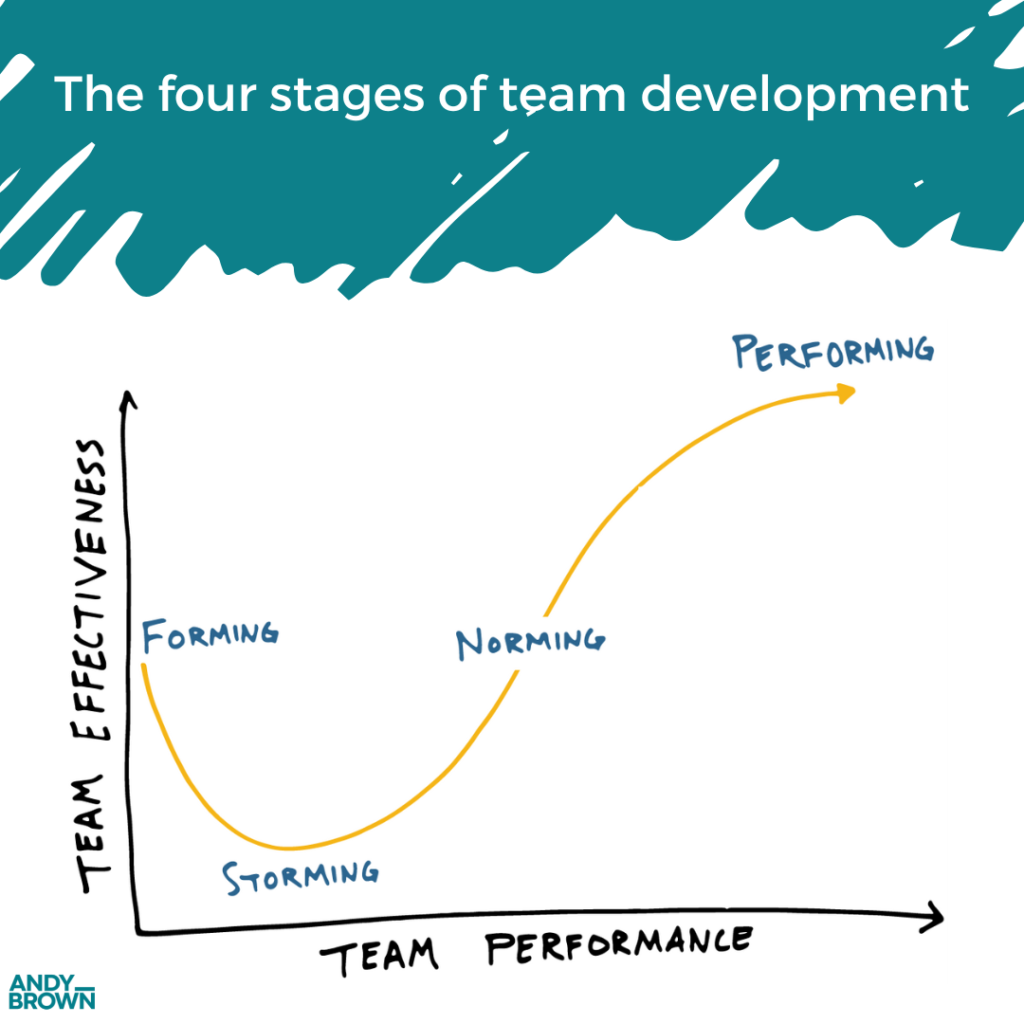When teams are formed, they go through predictable stages of development. Recognising, understanding and responding to this development and performance ‘curve’ has the ability to transform good teams into great ones.
A commonly used framework for these stages was developed in the mid 1960’s by Bruce W. Tuckman. His descriptions of Forming, Storming, Norming and Performing provide a useful framework for looking at your own teams’ performance.

Here are the four key stages of team development:
Forming
A team is formed, a common goal is established. People understand they depend on each other to complete it.
Storming
A phase full of uncertainties. People are not sure what to do. There are conflicts for roles, ideas and power.
Norming
People begin to have clarity and agreements. The team synchronises on the ways of working.
Performing
Team productivity goes UP. The team knows what to do and does it together in an aligned way.
Know what phases the team is in and act accordingly:
- During forming stage, you should make the bigger picture clear
- During storming phase you need to make sure each person is heard and different ideas are put into a discussion
- During the norming phase, establish a clear decision making process that everyone agrees to follow
- During the performing phases, have a high standard and make sure people don’t avoid holding each other accountable
Identify microevents
Whilst responding to the different phrases, remember that they are constantly repeating as your teams develop. Whenever you notice there is a desire to change or an actual change from the normal way of working, this will trigger the team to move into the storming or even forming stage. Little drops in performance before they dust themselves off and start working together well again. Let’s call these small shifts microevents, and you’re likely to see lots of these throughout the teams’ time together.
Microevents could come from within the team or be influenced by external events. Examples might include:
- A team member quitting
- A major global event
- An unusual customer request
- Process changes proposed
Managing the storming phase drop
All teams will go through the storming drop – the key for high performance teams is being able to anticipate, recognise and managing the drop.
- Normalise the drop – prepare people it will happen so it’s not a shock
- Announce when you see the drop happening
- Help the team pick a solution they can all agree to
As a leader, understanding the development curve is so important as you form new teams and undertake new projects. Helping your teams to understand the curve – and its constant rise and fall will really help with morale and problem solving.
Can you identify these stage in your teams?
Andy.